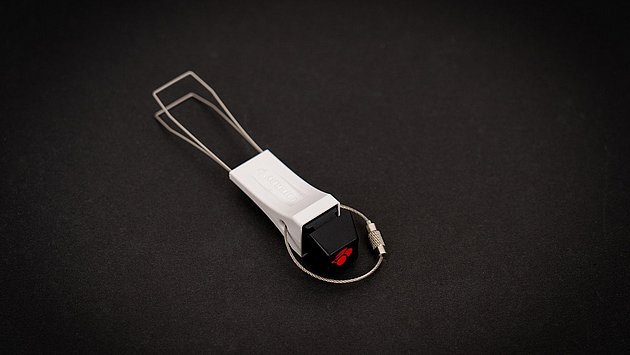[HOW TO] DIY KEYBOARD – PART 2: NECESSARY TOOLS AND COMPONENTS
04/2020 by HOLGER DASSLER - Back to overview

If you want to assemble a customized keyboard, you do not only need the appropriate components but also need some tools. In this article, we will summarize which tools you will need and give some recommendations to help you with easy installation. Concerning the tools, we pay attention to cost-effective solutions that still provide excellent results.
In the first part of our DIY keyboard how-to project we discussed the advantages of a customized solution. In part 2 we will focus on which tools and components are needed.
Soldering station
In principle the most important thing is a soldering station. On the web there are numerous options for cheap soldering stations which appear usable at first glance but ultimately lead to poor soldering results. We recommend stations that offer certain features, including, among other things, that the temperature can be regulated by setting the desired value on the soldering station. The required temperature is between 350 and 390 degrees Celsius. It is also ideal if the tip of the soldering iron can be replaced and ESD protection is integrated.
We recommend the Aoyue 936A, because this €35 soldering station fulfils the purpose and achieves good results. If you want to invest more from the start, have a look at solutions from Hakko. There are much higher quality solutions available, but they are only recommended for users who want to delve deeper into the subject matter in the future or who can use the soldering station for other purposes.

Accessories
The necessary accessories required for the soldering station should not be forgotten. These include a metal sponge to remove the excess solder and a desoldering pump that helps to correct errors, because switches can be easily removed with it. Alternatively, it is also possible to use an appropriate copper tape for desoldering. This absorbs the solder and is more efficient to use than the desoldering pump.


Otherwise, a small screwdriver set and a key cap puller should also be part of the necessary tools.
Solder
Besides a good soldering iron or a good soldering station, the solder plays an important role and is also decisive for the soldering result. Above all, quality should be taken into account and for this reason it is not advisable to use a cheap product, because it usually contains poor fluxes. High-quality solder is available from Felder and Kester, for example. Otherwise, a 60/40 mixture of tin (SN) and lead (Pb) has proven itself with keyboard makers. Two diameters should be purchased: 0.5 millimetres for LEDs and 0.75-1 millimetres for the switches.

KEYBOARD COMPONENTS
In order to finally build the keyboard, the necessary components must be purchased in advance. These can be obtained online in two ways. On the one hand, there is the possibility to buy the products directly from Asia. However, this can lead to long delivery times, possible customs fees and problems with defects. Local online shops are a more convenient and recommended source. The benefits are short delivery times, no customs fees, and service in case of a defect. In addition, a local dealer can offer advice, which is a great help especially for beginners.
Switches
One of the most important components of a keyboard are clearly the switches, which ultimately determine the typing feel and characteristics of the keyboard. In addition to our standard versions such as MX RED, MX BLACK, MX BLUE, MX BROWN, MX SPEED and MX SILENT, there are also special versions such as MX CLEAR, MX GREY, MX WHITE and MX GREEN. We will explain the differences between these switch types in an upcoming DIY article.

Circuit board / PCB
The circuit board forms the basis of each keyboard and ensures that the analog inputs of the switches are converted into digital signals for the PC. There are different suppliers and sizes. For beginners we recommend the SATAN GH60 or a similar board, because the construction is quite simple and 60-percent keyboards are very popular. Ideally, the PCB should have a multi-layout, because this allows different key assignments.

Stabilizer
Stabilizers are necessary to give more stability to, for example, the Shift and Space keys. They must be applied to the PCB before soldering and must match the corresponding country layout and key cap length.
Frame

Depending on which switch mounting you choose, a frame is necessary. The key switches are clicked into this frame and then soldered to the PCB. The frame should ideally correspond to the specific country layout of the final keyboard or be multi-layout compatible. In general, frame mounting is the easier option for beginners. However, if you want, you can also choose PCB mounting, but then you will need the appropriate switch versions with additional retaining pins on the bottom. In this case a frame is not necessary.
Housing
A housing not only holds PCB and frame, but also gives the keyboard its shape and stability. Many variations are possible by using different materials and colours. No matter whether you choose wood, metal or plastic, along with the keycaps the housing is the visible part of the keyboard and you should choose an attractive design. In any case, its dimensions must also match the frame and the PCB.

Keycaps

Each individual keyboard is rounded off by a set of keycaps. Here, the market offers an enormous selection. It is not only the design that is diverse, but also the quality. The inexpensive entry level is a simple, lacquered ABS keycap. Double-shot PBT keycaps are considered the highest quality solution. The latter are manufactured by GMK, a German company that is the absolute leader in this field.
If all these components are in place, you can start building the keyboard. How this works exactly and what to pay attention to will be explained in the following parts of this series of articles.